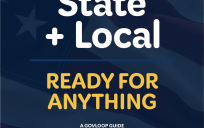If you pay attention to Canadian politics, or politics in general, you may have heard about the come from behind victory of Naheed Nenshi in the election for Mayor in Calgary. To be fair, calling it a come from behind victory hardly does it justice at all. With a large number of candidates, and polling numbers showing Nenshi with about 1 – 2% of the vote at the beginning of the campaign, the fact that he won the campaign with more than 40% of the vote is almost unbelievable.
Social media does not win elections by itself. However, the effective use of social media is critical in our elections as it can provide word of mouth buzz that is not possible in other ways. I spoke with Richard Einarson who ran the Nenshi’s campaign social media efforts to learn more about their approach.
Nenshi had a social media head start on many of the candidates as he had spent a year on Twitter prior to the election and already had a small, but engaged, twitter community of 700+ followers. This community knew Nenshi’s style, personality, and take on the issues and were ready to help him when he joined the election. This was critical as the campaign had very little money, relative to the perceived leaders, and social media had to play a major role early. While there were multiple aspects to the campaign, the major web-enabled communication pieces included:
- Twitter. Unlike most candidates Nenshi was the only person to communicate from his account. No communication team, just the candidate. This was critical as it would have been difficult to replicate his “style” and knowledge of the issues. As of today his twitter community exceeds 6000 people. Early in the campaign Nenshi would personally reply to all tweets, in between meetings, but this became impossible to continue as the campaign schedule heated up.
- Facebook. Facebook was used as another communication channel and the 15000+ fans assisted in spreading the word.
- YouTube. YouTube played an important role as a series of videos were created to address key issues. The videos were roughly 5-6 minutes in length, much longer than the 30 – 60 seconds that the “experts on the campaign” wanted. However, in order to explore the issues Nenshi felt he needed to take a different approach and opted for the use of the longer video format. The videos were a differentiator as they stood out from the high-level fluff you often see from candidates in an election.
- Web site. The web site was used in much the same manner as YouTube in that longer 5 – 6 page issue documents were created and posted to the site. Comments were left open and, especially early on, not all were favorable. Nenshi, and the rest of the campaign staff, were initially responding to all questions but again, as was the case on Twitter, the volume grew beyond their ability to keep up. They found, however, that their community of supporters jumped in to fill this void, with supporters responding to questions and comments. The voters were sharing the communication load.
These pieces, used in combination as messages were released, provided a relatively inexpensive approach early in the campaign and enabled Nenshi to reach key influencers early. However, in Einarson’s opinion social media would not have mattered if it were not for the authenticity of the candidate. The willingness to be open, to encourage people to ask questions and then to answer them, is what mattered the most. This authenticity, with the willingness to discuss issues in detail, combined with the use of traditional and social media was a winning combination.
John
Originally posted on Government in Action.




Nice! That’s how I would run a campaign. Way to leverage new technologies in new ways.
Web2.0 offers opportunities to open government and government officials to the public in ways never before imaginable.